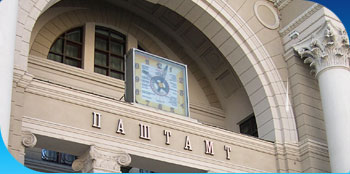Children philately. Chicks
Newsletter # 51 (752) December 28, 2017
| On January 3, 2018 the Ministry of Communications and Informatization of the Republic of Belarus will issue 4 stamps “Chicks” of the series “Children philately”. Artist: Alexander Mityanin. Design: Marina Vitkovskaya. Print process: offset. Colour: multicoloured. Paper: chalk-surfaced, gummed. Perforations: comb 14: 141/4. Stamps size: 30x28 mm. Sheets composition: 9 (3x3) stamps. Sheets size: 113x110 mm. Print quantity: 72.000 stamps each. Printer: Republican Unitary Enterprise “Belarusian Printing House Publishing Co.”. Face value A is equal to the tariff of a letter up to 20 gram within Belarus. Face value N is equal to the surface tariff of a postcard abroad. Face value M is equal to the air-mail tariff of a postcard abroad. Face value H is equal to the surface tariff of a letter up to 20 gram abroad. |
| No. 1234 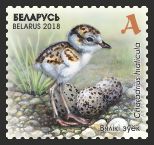 Ringed plover A 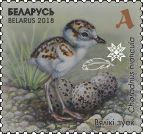 Elements of protection |  |
| No. 1235  Common tern N 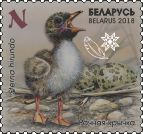 Elements of protection | 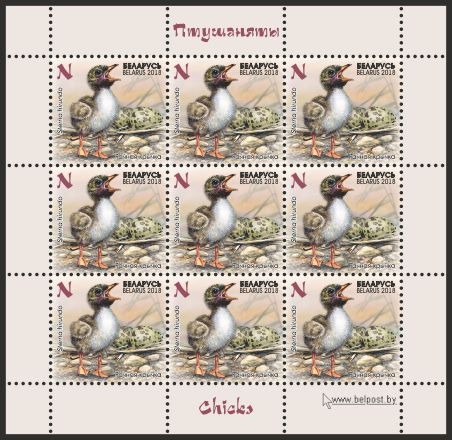 |
| No. 1236 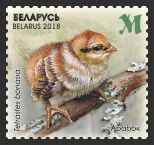 Hazel grouse M  Elements of protection | 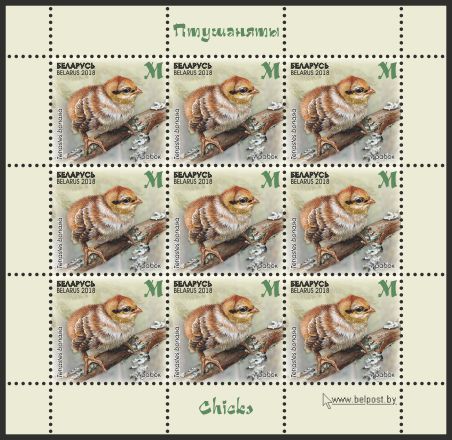 |
| No. 1237 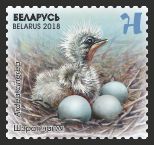 Grey heron H 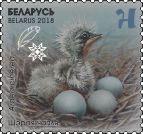 Elements of protection | 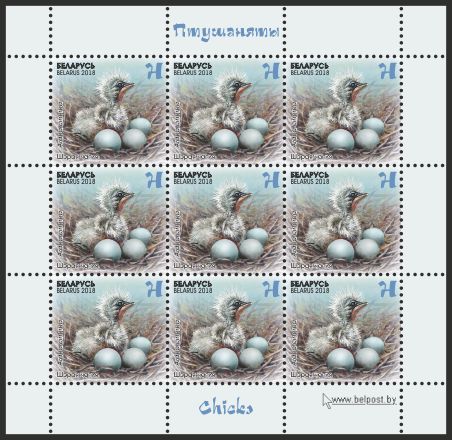 |
| A sheetlet is also issued. Sheetlet composition: 8 (2 sets) stamps. Sheetlet size: 142x76 mm. Print quantity: 20.000 sheetlets. |
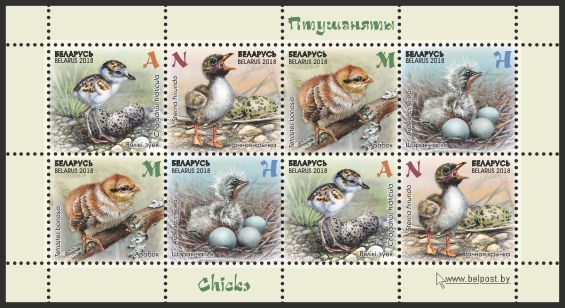 |
| The ringed plover lives mainly along the banks of rivers, seas and lakes. Newborn ringed plovers quickly dry out and try to run out of the nest. At the age of about 24 days they begin to fly. Their food is water and terrestrial invertebrates: mollusks, small crustaceans, insects and their larvae. The species is listed in the Red Book of the Republic of Belarus since 1993. The common tern is widely distributed throughout the world. During the nesting period it arranges colonies on sandy and rocky islands. Hatching chicks sit in the nest for the first 5 days, and then they start to follow the adult birds everywhere. They begin to fly at the age of 25-28 days. The food ration mainly includes fish (about 95%) as well as worms, small squids, leeches, shrimp, sea crabs, beetles, moths and other insects. The hazel grouse lives in dense coniferous and mixed forests. It makes nests on the ground. The newly born chicks adapt very quickly: after a few hours they leave the nest and in 2 weeks they begin to fly. The bird feeds on berries, plants and their seeds. It also likes ants. In winter the main food ration consists of buds of trees and also frozen berries. There are 14 species in the genus of herons. The birds live on all continents except Antarctica. The grey herons nest in large colonies. Hatching chicks are sighted and covered with fluff. They begin to fly at the age of 2 months. The food ration consists of fish, crayfish, frogs, snakes, lizards, small rodents, other birds and their eggs, chicks and insects. |
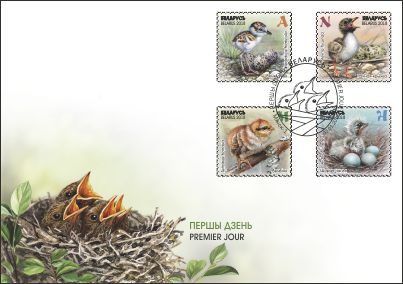 | 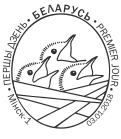 Colour of the postmark — black. Special postmark and FDC painted by A.Mityanin, designed by M.Vitkovskaya. |
| A special cancellation on FDC will be carried out at the post office No.1 of Minsk (shop “Philately”,16 Moskovskaya street) on the stamp issuing day. |
| 4 maximum cards “Chicks” will be issued too. Artist A.Mityanin. Design by M.Vitkovskaya. |
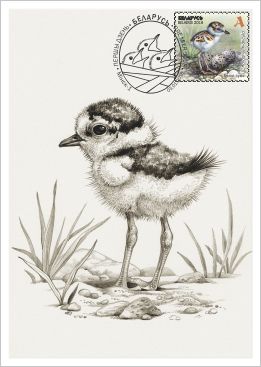 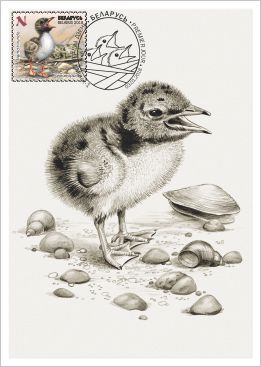 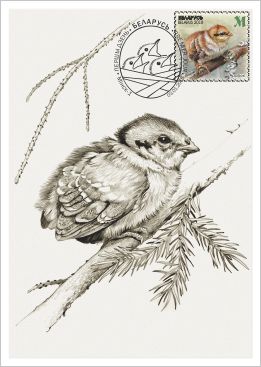 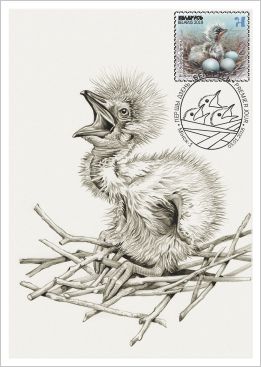 |
| « # 50 (751) 01.12.2017 | Postage stamps of 2018 | # 52 (753) 03.01.2018 » |
You can also open a PDF formated version of this newsletter or download a PDF zip-compressed file for a later off-line view. | ||
Adobe® Acrobat® Reader® is free software that lets you view and print Adobe Portable Document Format (PDF) files. If you do not have it installed on your computor, please click on the image. | ||
